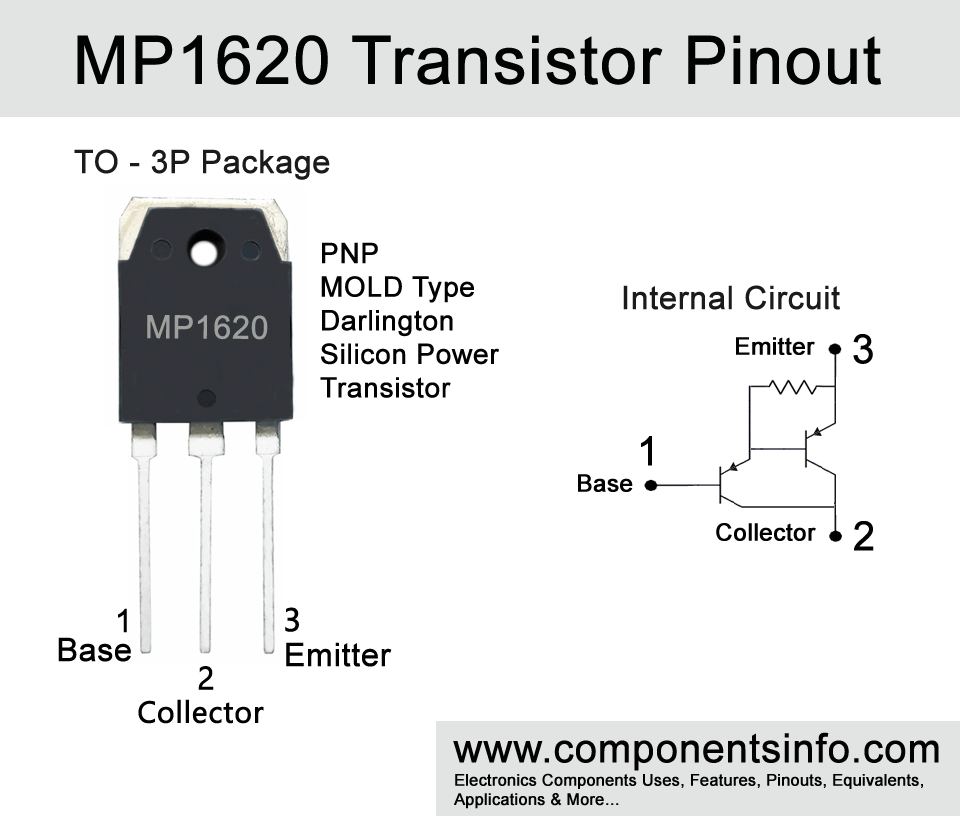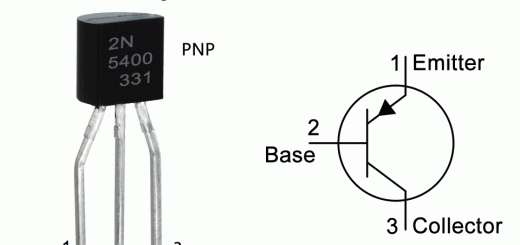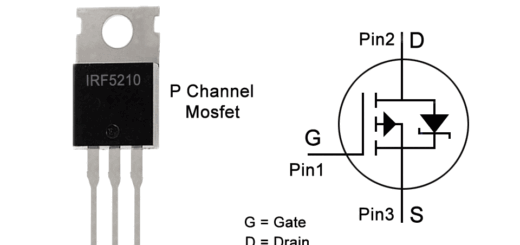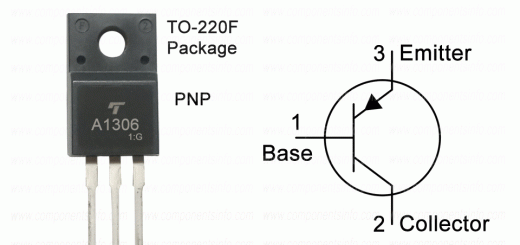MP1620 Transistor Pinout, Equivalent, Applications, Features, Explanation and Other Info
MP1620 is a PNP dralington transistor available in TO-3P package. It is a mold type silicon power transistor features very high DC current gain. The article below describes MP1620 transistor pinout, equivalent, applications, features, explanation and other info about this transistor.
Features / Technical Specifications:
- Package Type: TO-3P
- Transistor Type: PNP MOLD Type Darlington Silicon Power Transistor
- Max Collector Current(IC): -10A
- Max Collector-Emitter Voltage (VCE): -150V
- Max Collector-Base Voltage (VCB): -160V
- Max Emitter-Base Voltage (VBE): -5V
- Base Current: -1A
- Max Collector Dissipation (Pc): 150W
- Max Transition Frequency (fT): 55 MHz
- Minimum & Maximum DC Current Gain (hFE): 5000 to 30000
- Max Storage, Operating & Junction temperature range: -55 to +150 Centigrade
NPN Complementary:
NPN Complementary of MP1620 is MN2488.
Replacement and Equivalent:
2SB1620, 2SB1647, NJW0302G
MP1620 Transistor Explained / Description:
MP1620 is a PNP darlington power transistor which is built using MOLD technology. As mentioned it is a darlington transistor, a darlington transistor contains a pair of two transistors inside which are connected in such a way which increase the transistor DC current gain to great extent. Hence the transistor has the DC current gain of 5000 to 30000. The other specs of the transistor are also quite interesting. The maximum collector current is -10A, max collector to emitter voltage s -150V, max collector to base voltage is -160V, max emitter to base voltage is -5V, maximum base current is 1A and maximum collector power dissipation is 150W. The transistor is not manufactured by many companies it is manufactured by only one Japanese company but if you can’t find one then you can also try its equivalents mentioned above.
MP1620 transistor is mostly used in audio amplifier circuits but one can also use in in designing other applications such as AC and DC motor controllers, alternator regulator etc. A detailed list of its applications can be found under the applications heading below.
Like its NPN complimentary MN2488, MP1620 transistor is also manufactured in three different DC current gain or hFE that can be find out by check the alphabet after the part number. If that alphabet is “O” then the hFE will be 5000 to 12000, if that alphabet is “P” then the hFE wil be 6500 to 20000 and if its “Y” then the hFE will be 15000 to 30000.
Where We Can Use it & How to Use:
The transistor is mainly designed to use in audio amplification applications but it can also be used for variety of other purposes or in many different applications. Using procedure of the transistor is same as other we use other darlington transistors.
Applications:
High Power Audio Amplifiers
AC and DC Motor Drivers and Controllers
Voltage Regulators
Power Supplies
Battery Chargers
Battery Management Systems
Electronic Ignition Applications
Alternator Regulator Applications
And many other general purpose applications
Safe Operating Guidelines / Absolute Maximum Ratings:
Follow the below guide lines to safely operate the transistor and get long term performance.
- Do not operate the transistor to its absolute maximum ratings because using a component on its absolute maximum ratings may damage it or weakens its performance. Therefore it is better to operate it atleast 20% below from its absolute maximum ratings.
- The maximum continuous collector current is -10A, therefore do not drive load of more than 8A.
- The maximum collector to emitter voltage is -150V, therefore do not drive load of more than 120V.
- Do not store or operate the transistor at temperatures below -55°C and above +150 °C.
Datasheet:
To Download the datasheet just copy and paste the below link into your browser.
https://z3d9b7u8.stackpathcdn.com/pdf-down/M/P/1/MP1620_SanKen.pdf



